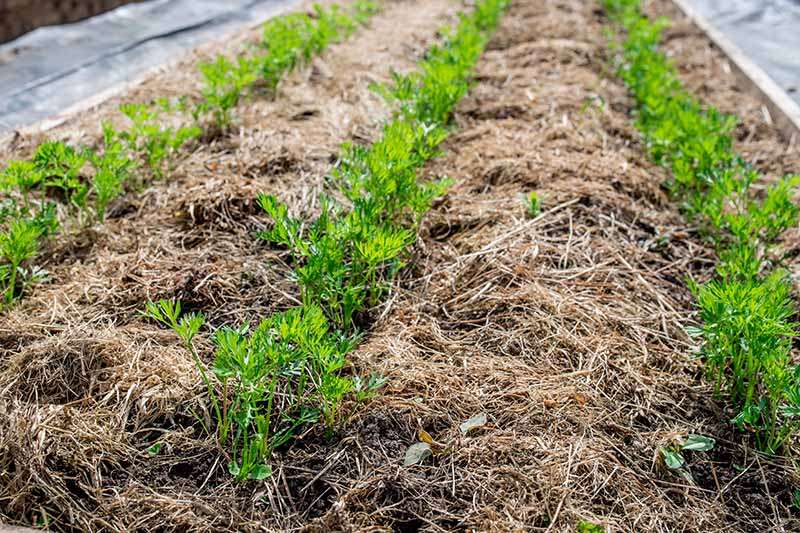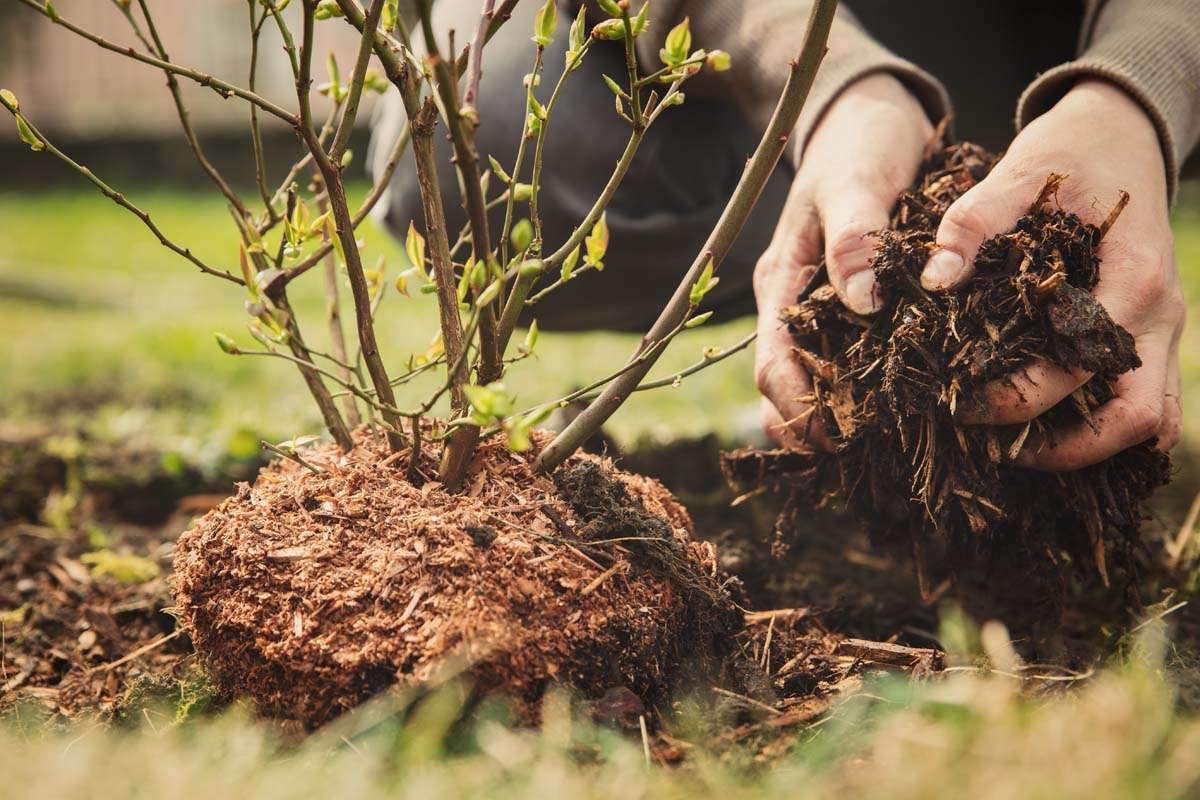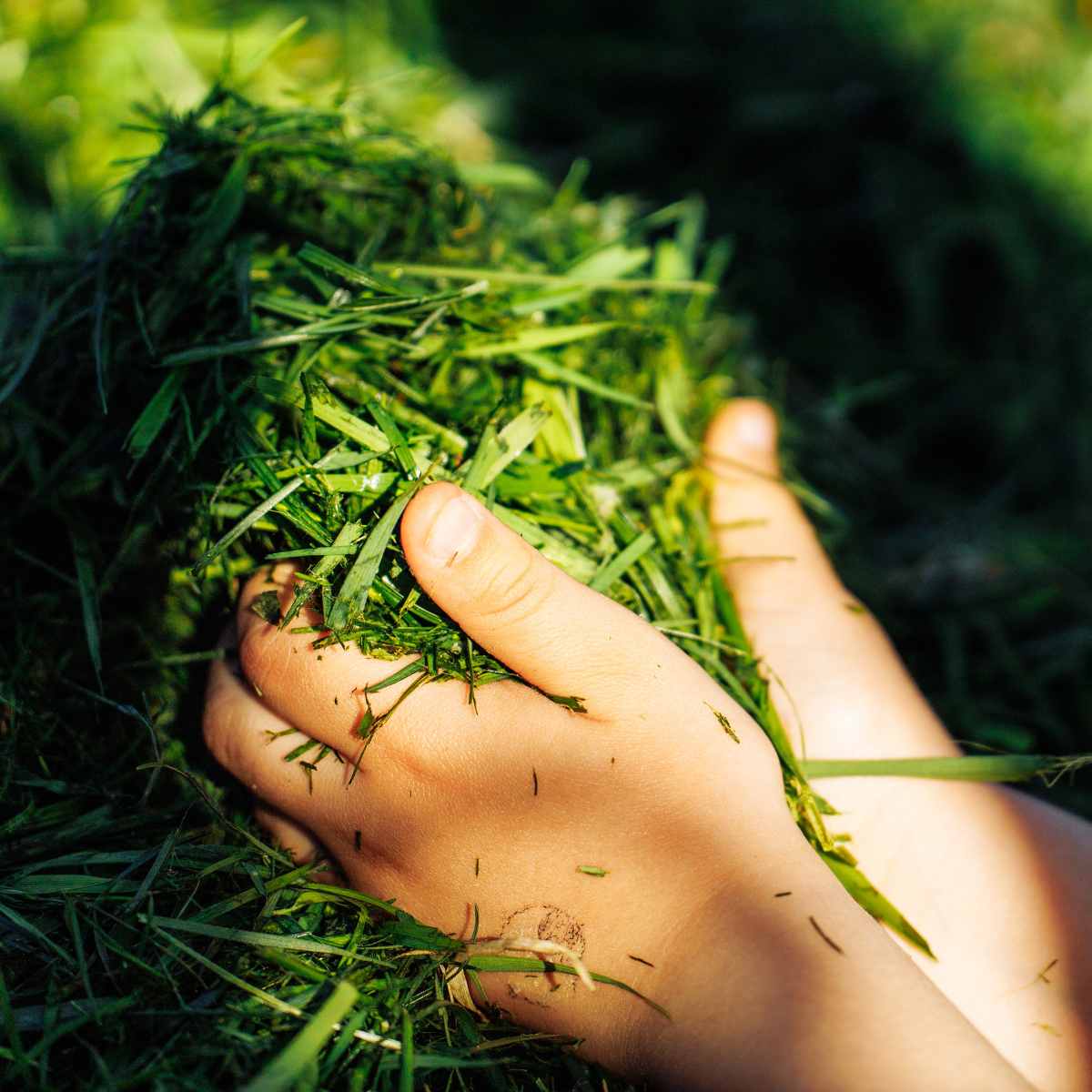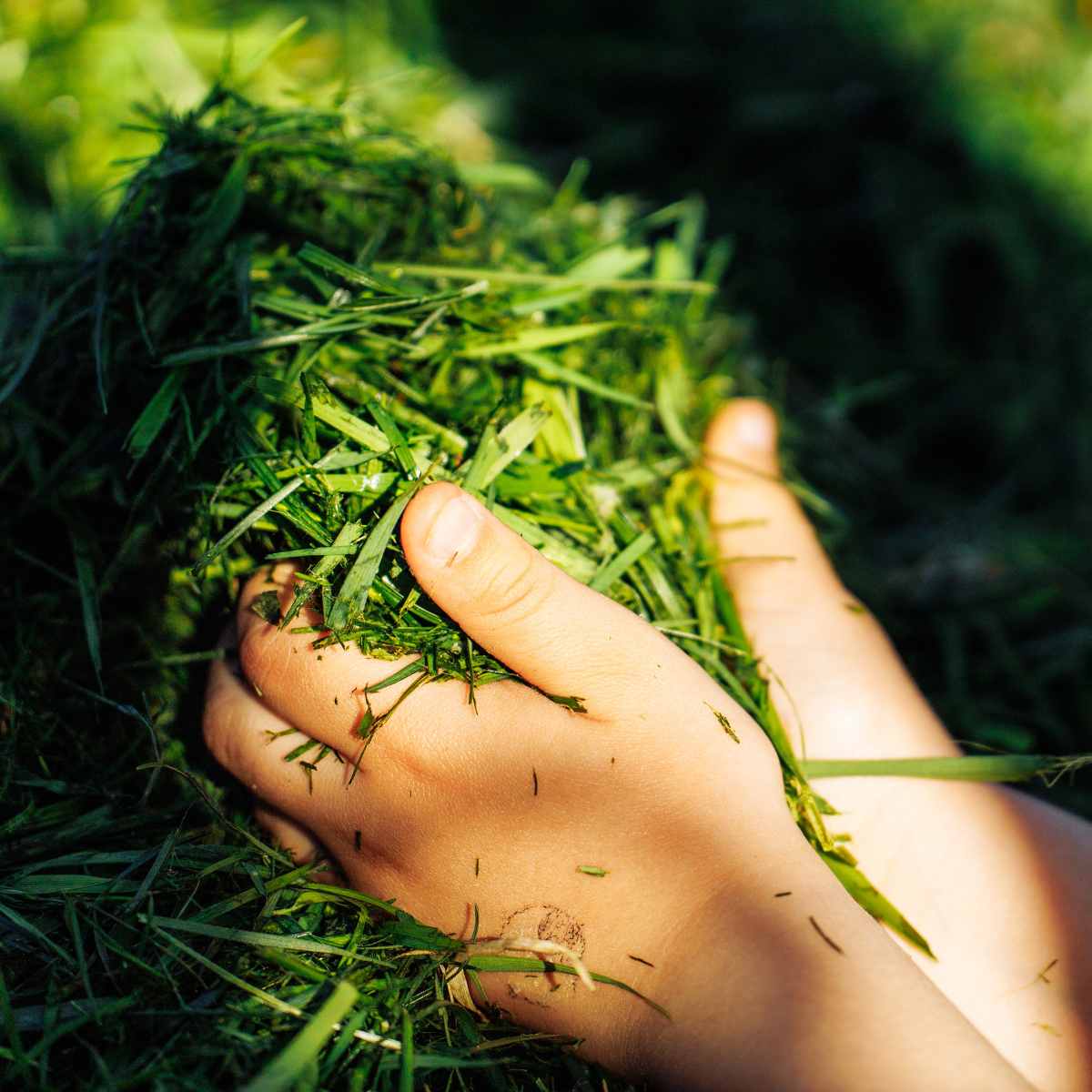If you’re looking for a natural and cost-effective way to improve the health and vitality of your plants, look no further than mulching with grass clippings. Not only does this method protect your plants, but it also adds valuable nutrients to the soil that are often discarded when mowing the lawn. Whether you use green or dried-out clippings, it’s important to ensure they haven’t been sprayed with herbicides or pesticides. By placing a layer of grass clippings around your plants, you can retain moisture, suppress weed growth, and contribute organic matter to the soil. Just be sure to water the clippings when first using them as mulch, especially if they’re dried out. And while it’s beneficial for growing plants from seeds, make sure there’s no mulch covering the seeds. With a little time and periodic additions of fresh clippings, you can witness the benefits of mulching and enhance the decomposition and nutrient content of your soil. So start repurposing those grass clippings and watch your plants thrive!
Benefits of Mulching with Grass Clippings
Mulching with grass clippings offers numerous benefits for your plants and soil. By using grass clippings as mulch, you can provide protection for your plants and add valuable nutrients to the soil. It’s an excellent way to repurpose a resource that is often discarded after mowing the lawn. Let’s explore the advantages of mulching with grass clippings in more detail.
Protection for Plants
Mulching with grass clippings provides a protective layer around your plants. This layer helps to retain moisture in the soil, preventing it from evaporating too quickly. In hotter climates or during dry spells, this moisture retention is crucial for the health and survival of your plants. Additionally, the mulch acts as an insulating barrier, keeping the soil temperature more stable and protecting the plant roots from extreme temperatures.
Nutrient Addition to Soil
Grass clippings contain valuable nutrients that are beneficial to your soil. The clippings are rich in nitrogen, phosphorus, and potassium, which are essential for the healthy growth of plants. By using grass clippings as mulch, you are recycling these nutrients back into the soil, rather than wasting them by throwing them away. Over time, as the clippings decompose, they release these nutrients into the soil, enriching it and providing a natural and sustainable source of plant food.

Choosing the Right Grass Clippings
When it comes to using grass clippings as mulch, it’s essential to choose the right type of clippings and ensure they haven’t been contaminated with herbicides or pesticides.
Green or Dried-Out Clippings
Both green and dried-out grass clippings can be used as mulch. Green clippings are fresher and contain higher levels of moisture, making them excellent for moisture retention. Dried-out clippings, on the other hand, provide better weed suppression as they form a denser layer. The choice between green and dried-out clippings depends on your specific needs and the desired outcome. However, regardless of which type you choose, ensure that the clippings have not been sprayed with herbicides or pesticides.
Avoiding Herbicides and Pesticides
Before using grass clippings as mulch, it’s crucial to ensure that they have not been treated with herbicides or pesticides. These chemicals can be harmful to your plants and the environment. If you regularly use herbicides or pesticides on your lawn, it’s best to avoid using the clippings from that particular mowing session as mulch. Opt for clippings from a section of the lawn that hasn’t been treated with any chemicals.

Applying Grass Clippings as Mulch
The proper application of grass clippings as mulch is essential to maximize their benefits and avoid potential issues.
Placement Around Plants
To mulch with grass clippings, simply spread them around the base of your plants, forming a layer that covers the soil. It’s important to avoid direct contact between the clippings and the stems of the plants, as this can create a moist environment that promotes disease and rot. Leave a small gap between the plant stems and the mulch to allow for airflow.
Avoiding Stems
When applying the grass clippings, take care to ensure that no clippings touch the stems of your plants. Contact between the clippings and the stems can lead to moisture accumulation, which can result in fungal diseases and rot. By keeping the clippings away from the stems, you create a protective barrier that helps to maintain the health of your plants.
Ideal Thickness
The thickness of your grass mulch layer is an important factor to consider. A layer that is too thin may not provide adequate weed suppression, while a layer that is too thick can prevent water from reaching the soil and impact the airflow around the plants. As a general guideline, aim for a grass mulch layer that is between 2 to 6 inches thick. However, the ideal thickness can vary depending on your climate and the type of grass clippings used. Monitoring the moisture content of the soil and adjusting the thickness of the mulch accordingly is key to maintaining a healthy growing environment.

Functions of Grass Clippings as Mulch
By using grass clippings as mulch, you can take advantage of several important functions that contribute to the overall health and productivity of your garden.
Moisture Retention
One of the primary functions of mulch, including grass clippings, is moisture retention. The layer of mulch acts as a protective barrier, reducing evaporation from the soil surface. This helps to keep the soil consistently moist, even during hot and dry periods. The moisture retention provided by grass clippings as mulch ensures that your plants have a steady supply of water, promoting healthy growth and reducing the need for frequent watering.
Weed Suppression
Another significant benefit of using grass clippings as mulch is weed suppression. The layer of mulch acts as a physical barrier, preventing weed seeds from germinating and sunlight from reaching existing weeds. This natural weed control method reduces the competition for nutrients and water, allowing your plants to thrive without having to compete with unwanted vegetation. Regularly adding fresh grass clippings to your mulch layer can help maintain its weed-suppressing effectiveness.
Organic Matter Contribution
Grass clippings, as an organic material, contribute to the organic matter content of your soil. As the clippings decompose, they break down into organic matter, enriching the soil with essential nutrients and improving its structure. This organic matter stimulates microbial activity, enhancing soil fertility and overall soil health. The continuous addition of grass clippings as mulch can gradually build up the organic matter content of your soil, leading to long-term benefits for your plants.

Precautions and Best Practices
While mulching with grass clippings has numerous benefits, it’s important to follow certain precautions and best practices to ensure successful outcomes.
Avoiding Herbicides and Pesticides
As mentioned earlier, it’s crucial to avoid using grass clippings treated with herbicides or pesticides. These chemicals can harm your plants and disrupt the natural balance of your garden ecosystem. Opt for clippings from areas of your lawn that have not been treated with any chemicals, or consider using organic lawn care methods that eliminate the need for chemical treatments altogether.
Watering the Clippings
When first using grass clippings as mulch, especially if using dried-out clippings, it’s essential to water them thoroughly. This initial watering helps to settle the clippings and prevents them from blowing away. It also activates the decomposition process, enabling the release of nutrients into the soil. Additionally, watering the clippings helps to prevent them from becoming too dry, as excessive dryness can hinder their decomposing ability.
Mulching Seeds Properly
While grass clippings can be beneficial for growing plants from seeds, it’s important to mulch seeds properly. When sowing seeds, ensure that no mulch covers the seeds directly. This can prevent proper germination and inhibit seedling emergence. If you intend to mulch seeds, apply a thin layer of mulch after the seeds have sprouted and emerged from the soil.
Adding Fresh Clippings Periodically
To enhance decomposition and maintain a healthy mulch layer, consider adding fresh grass clippings periodically. Fresh clippings can supplement the nutrient content of the soil, provide a fresh source of organic matter, and boost the weed-suppressing properties of the mulch. Avoid adding thick layers of fresh clippings, as they can become matted and hinder airflow. Instead, apply thin layers and rake them into the existing mulch to ensure proper decomposition.

Mulching for Soil Building
Using grass clippings as mulch can contribute to the building up of your soil over time, despite some potential limitations.
Time for Building up Soil
It’s important to understand that building up soil with grass clippings takes time. The decomposition process can vary depending on factors such as temperature, moisture levels, and the size of the clippings. It may take several months or longer for the clippings to completely break down and contribute to soil improvement. However, as the clippings decompose, they gradually release their nutrients and organic matter into the soil, enhancing its fertility and structure.
Benefits Despite the Time
While soil building with grass clippings may require patience, the benefits of mulching can still be observed in the meantime. The moisture retention properties of the mulch, weed suppression, and nutrient contribution begin to take effect immediately after application. These benefits help create a healthier growing environment for your plants, even as the clippings slowly decompose and work their magic on the soil. So don’t be deterred by the time it takes for grass clippings to build up your soil. Every mulching application adds value and contributes to the overall health of your garden.
In conclusion, mulching with grass clippings is an effective and sustainable way to protect your plants and improve the health of your soil. By choosing the right type of clippings, applying them correctly, and following best practices, you can enjoy the numerous benefits that grass clippings as mulch offer. Whether it’s moisture retention, weed suppression, or soil improvement, this simple and affordable technique can make a significant difference in the success of your garden. So next time you mow your lawn, consider saving those grass clippings and using them to nourish and protect your plants.




